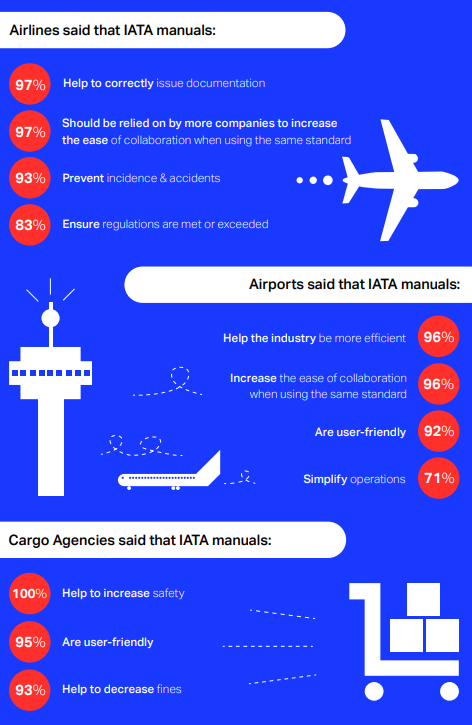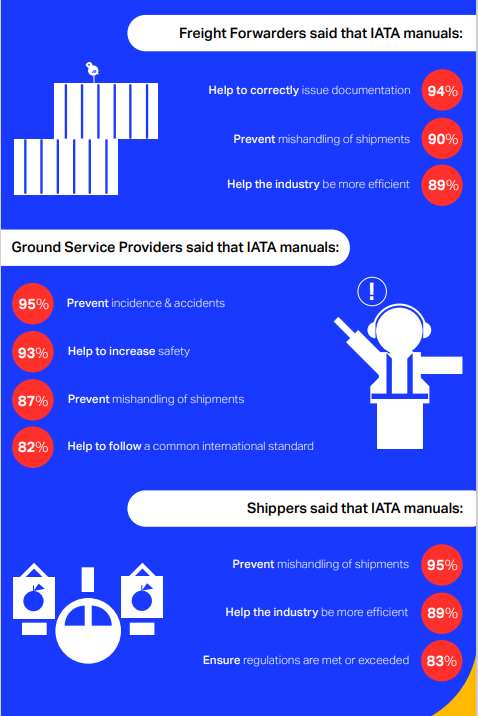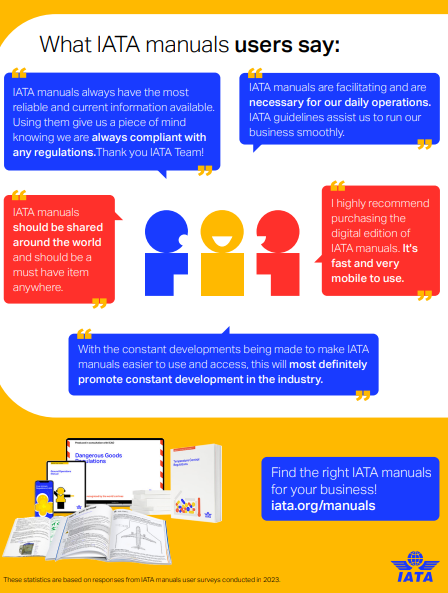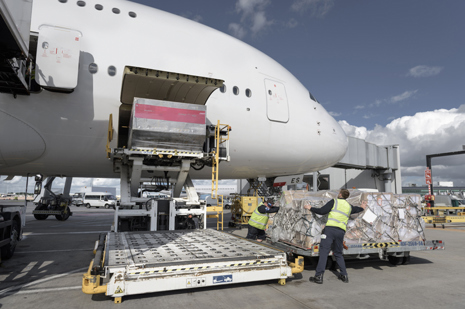
In the fast-paced air cargo industry, adherence to standards and regulations is paramount. IATA manuals serve as essential tools for organizations of all sizes, providing guidance on regulations and best practices. Users consistently find our manuals invaluable for enhancing efficiency, minimizing safety risks, and avoiding fines. Airlines, airports, ground service providers, freight forwarders, and other essential stakeholders trust IATA manuals to foster resilient and streamlined operations. Furthermore, numerous countries around the world have formally integrated the provisions outlined in IATA manuals into their legislative frameworks, underscoring their significance on a global scale.
Aviation regulations are crafted through collaborative efforts involving various stakeholders, including key aviation experts, representatives from different sectors, local government bodies, and the International Civil Aviation Organization (ICAO), among others. Together, they form a unified network dedicated to fostering safety, efficiency, and smooth operations within the industry. Their collective aim is to create regulations that evolve with the dynamic aviation landscape. Through rigorous analysis and consultation, these stakeholders anticipate and address challenges pre-emptively, drawing upon diverse expertise to develop a robust regulatory framework. One crucial aspect of this collaboration is ensuring that aviation manuals contain comprehensive, practical, and efficient guidelines. This involves thorough examination of existing practices and regulatory requirements to identify areas for improvement and refinement.
Each year, the IATA manuals undergo a significant number of changes as part of a comprehensive process aimed at ensuring compliance with the latest regulations and industry trends. This rigorous exercise involves collaboration with industry experts through dedicated workgroups, ensuring that the manuals remain up to date with the evolving landscape of regulations and best practices.
Based on a recent survey, air cargo industry experts highlight the instrumental role our manuals play in facilitating their day-to-day operations. IATA manuals are indispensable tools that empower professionals to perform their jobs with precision and proficiency. By providing clear standards and regulations, they serve as a trusted resource for cargo operators, enabling them to navigate complex scenarios with ease and confidence. Beyond the practical benefits, IATA manuals contribute to organizational cohesion and efficiency. By serving as a common reference point and promoting standardized practices. As the industry continues to evolve, we remain committed to empowering organizations with the tools they need to thrive in an ever-changing landscape.
The Dangerous Goods manuals such as Dangerous Goods Regulations (DGR), Lithium Batteries Shipping Regulations (LBSR), Infectious Substances Shipping Regulations (ISSR) play a crucial role in assisting various stakeholders across the supply chain, including airlines, freight forwarders, ground handlers, shippers, manufacturers, and retailers, to ensure compliance when transporting dangerous goods. Our primary objective is to mitigate risks throughout the transport journey, thereby reducing the likelihood of incidents. The regulations were created with a dual purpose: ensuring the safe transportation of restricted items and optimizing operational efficiency. These standards are summarized in the manuals and regulations that serve as comprehensive guides for those involved in various facets of the supply chain.
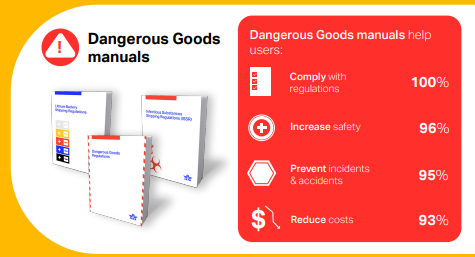
The dangerous goods manuals and regulations function as operational blueprints, translating complex legal requirements into accessible language. By doing so, they empower individuals working within the supply chain to navigate regulations with clarity and confidence. These guidelines bridge the gap between intricate frameworks and practical implementation, fostering a safer and more streamlined transport process for everyone within the supply chain.
By adhering to the guidelines outlined in the manuals, organizations can prevent harm to passengers, ground staff, and other personnel involved in the transport chain. Maintaining compliance and staying up to date with the latest regulations is paramount to ensuring the continued safety and efficiency in the transportation of dangerous good
The Special Cargo manuals such as Live Animals Regulations(LAR), Perishable Cargo Regulations(PCR), Temperature Control Regulations(TCR), Compassionate Transport Manual(CTM) encompass a wide array of specialized cargo categories, including live animals, perishables, time-sensitive products, human remains and more. Given their unique characteristics such as weight, dimensions, and value, these goods often entail specific requirements in terms of packaging, labelling, documentation, and handling throughout the transport chain.
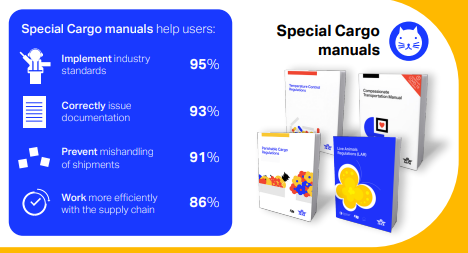
The Special Cargo manuals serve as comprehensive repositories of essential information for cargo operators, encompassing a wide array of topics crucial for the safe and secure transportation of goods. Within these manuals, guidelines are available for various operational scenarios. Moreover, the manuals also incorporate a thorough compilation of country-specific regulations governing transportation activities. Given the diverse regulatory landscape across different jurisdictions, this compilation provides invaluable insights into the legal requirements that must be met when transporting goods internationally or domestically.
By consolidating this information in one accessible resource, the manuals facilitate compliance with regulatory mandates, minimizing the risk of non-compliance penalties and disruptions to operations. By adhering to these regulations, organizations can optimize their cargo operations, mitigate risks, and reinforce their reputation for reliability within the industry
Cargo Operations are the hub of the air cargo supply chain and are performed by countless handlers across thousands of airports worldwide. Our aim is to pioneer safe, efficient, and customer-centric operations for the entire air cargo industry.
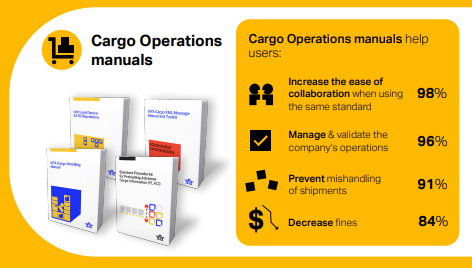
Central to achieving this vision are our Cargo Operations manuals such as the IATA Cargo Handling Manual (ICHM), ULD Regulations(ULDR), Cargo-XML Toolkit(CXML) and Standard Procedures for Preloading Advance Cargo Information(PLACI) serve as the cornerstone of regulations, standards, and best practices. Our manuals empower stakeholders to make informed decisions and streamline operations with unparalleled precision. Our cargo operations manuals serve as comprehensive guides designed to streamline collaboration efforts, ensure operational consistency, and mitigate risks in the transportation of goods.
The IATA manuals play a pivotal role in assisting airlines with the accurate issuance of documentation, serving as authoritative references for navigating the intricacies of regulatory requirements and operational procedures. Organizations can also streamline collaboration efforts, fostering seamless communication and cooperation among partners who adhere to the same standards. Furthermore, widespread adoption of these manuals can significantly contribute to risk mitigation strategies. By equipping airlines with comprehensive guidance on best practices and regulatory compliance measures, these manuals empower organizations to proactively identify and address potential hazards, thus reducing the likelihood of incidents and accidents.
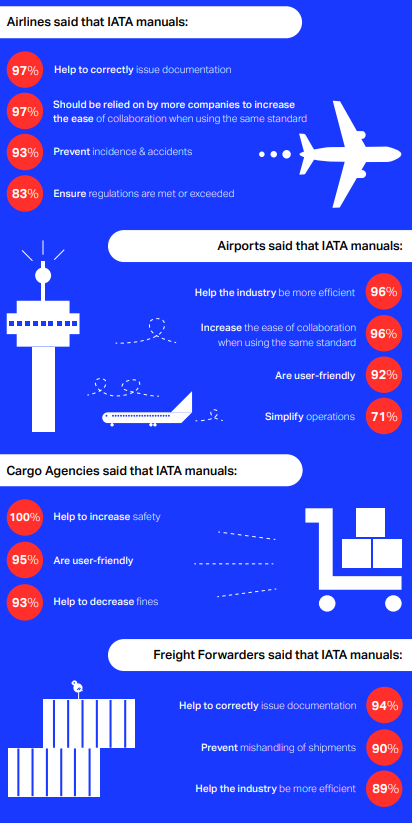
Airports have emphasized the transformative impact of these manuals on enhancing industry efficiency, citing their user-friendly nature and ability to simplify operations. By providing clear and accessible guidelines, these manuals empower airport personnel to navigate complex processes with ease, thereby streamlining day-to-day operations and reducing the likelihood of errors or inefficiencies.
The IATA manuals offer a comprehensive guidance on best practices and regulatory compliance measures aimed at enhancing safety standards. By providing clear and accessible instructions, these manuals empower cargo agency personnel to implement robust safety protocols effectively, thereby reducing the likelihood of accidents or incidents during transportation operations. By fostering a shared understanding of safety procedures and guidelines, these manuals facilitate effective communication and collaboration among agency staff, further strengthening safety practices and minimizing the risk of safety breaches. This proactive approach not only protects the well-being of personnel and the integrity of cargo but also safeguards the reputation and credibility of the agency within the industry.
IATA manuals serve as indispensable resources for freight forwarders, offering comprehensive guidance to ensure the accurate issuance of documentation. By outlining the required procedures and documentation formats, these resources empower forwarders to navigate complex documentation requirements with confidence and precision. By providing detailed guidelines on handling procedures, packaging requirements, and cargo security measures, the IATA manuals enable freight forwarders to implement robust safeguards throughout the transportation process.
IATA manuals serve as invaluable resources for ground service providers, offering comprehensive guidance to prevent accidents and incidents, enhance safety measures. By outlining best practices for equipment operation, vehicle movement, and personnel safety, these resources empower service providers to create a safe working environment and mitigate the risk of workplace accidents, prevent the mishandling of shipments, and ensure adherence to a common international standard. In addition to enhancing safety, our manuals also help prevent the mishandling of shipments through comprehensive guidelines and procedures. By providing detailed instructions on cargo handling, storage, and transportation, these resources ensure that shipments are handled with care and in accordance with industry best practices.
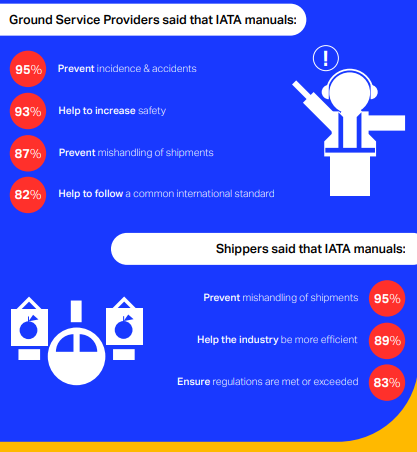
IATA manuals serve as essential tools for shippers, offering comprehensive guidance to prevent the mishandling of shipments, enhance operational efficiency, and ensure compliance with regulations, often surpassing the required standards. By outlining best practices for labelling, documentation, and tracking, these resources empower shippers to ensure that their shipments reach their intended destinations accurately and on time. From proper labelling of packages to utilizing advanced tracking technologies, these guidelines help minimize the risk of misrouting or misidentification during transit, safeguarding the timely delivery of goods and maintaining customer satisfaction.
By continually refining and updating our manuals based on user feedback, we aim to drive even greater efficiency, collaboration, and safety within the air cargo industry. To access the IATA manuals, visit the Manuals, Standards, and Regulations page. On our dedicated page, you can explore manuals and regulations tailored to your specific area of interest or you can also or visit the IATA online store. With a legacy of trust spanning over 75 years, IATA has developed global standards which the air transport industry is built upon. Be sure to also improve your skills with dedicated Cargo training courses as well as CEIV Special Cargo Certifications and Operations Certifications. As we look to the future, we remain committed to ensuring global consistency and harmonization across the air cargo supply chain. View the full infographic.


